Diamond wheels and e-bikes in top quality since 1885 made in Germany
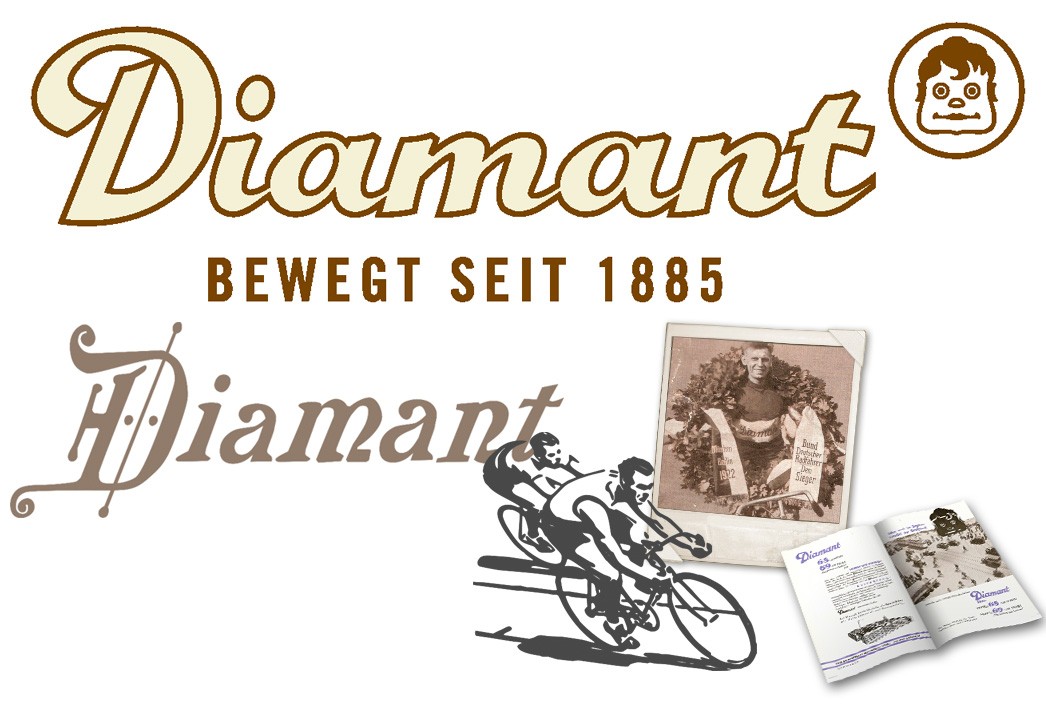
The success story of Diamant began in 1857 in Niederelausitz. The two brothers Friedrich and Wilhelm grow up in modest circumstances, but develop good craftsmanship. On January 1, 1882, the two brothers founded their first workshop under the company code: "Gebrüder Nevoigt, Reichenbrand / Chemnitz". In their factory, the brothers produce knitting machines for stockpiles. Demand is great, the company thrives.
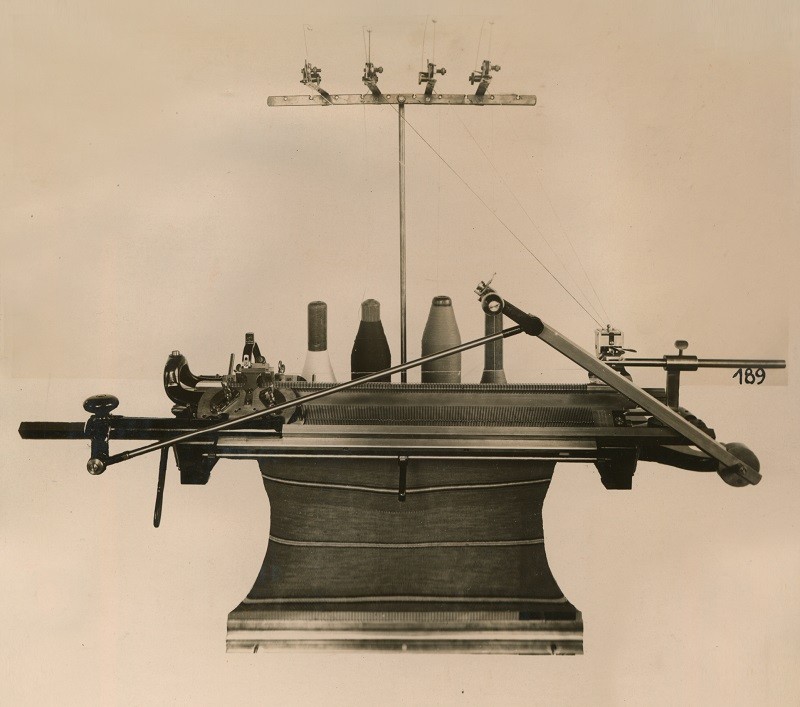
The company is growing so fast that the two brothers decide to build a new factory building. Already in the same year you get your new building.
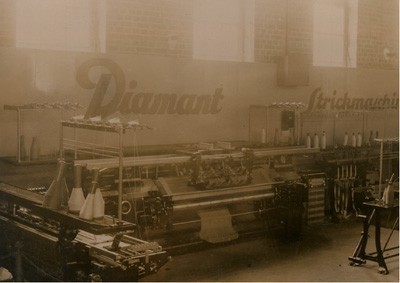
1895 is a very special event: the first bike, which carries the name "Diamant", rolls off the line.
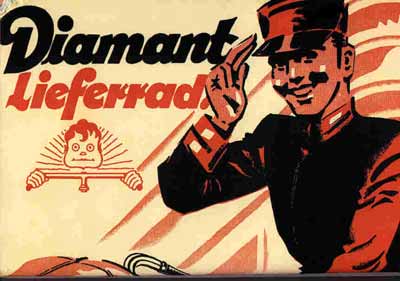
1898: The brothers constantly improve their new product, the bicycle. For example, the chain drive, which was very susceptible to blockage as a block chain. The Nevoigts instead equip their bicycles with a self-developed double roller chain. With this innovative drive element of the bicycle they set a world standard: it forms the principle of the bicycle chain of today.
1906: The competition is getting tougher and the brothers Friedrich and Wilhelm urgently need more money in order to be profitable in the market. They obtain the necessary money for the socialization of their business. The brothers Nevoigt AG, Reichenbrand-Chemnitz, will now be taken from the small farm.
1911: The new trademark is registered in the trademark register.
1920: More and more professional drivers will find their way into the diamond racing team: for example the brothers Adolf and Richard Huscke and talent Pau Koch.
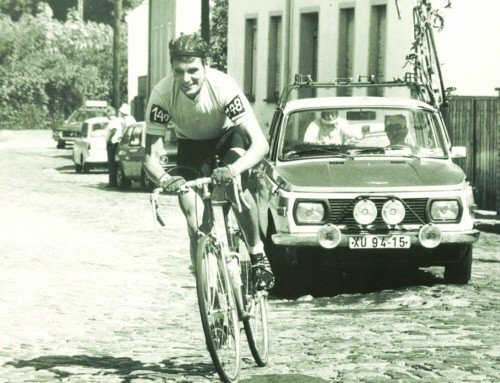
1923: Deutschland verfällt in eine hohe Inflation: 1914 kostete ein Herrenrad 145 Mark, so kostete es 1922 bereits 1.400 Mark und im Juli 1923 bereits 2.500.000 Mark. Bei Diamant wird begonnen eigenes öffentliches Geld zu drucken: das Diamant Betriebsnotgeld.
1924: Das Straßenrennrad- Modell 48 "die edle Perle" entsteht. Viele Neuerungen, mehr Erfahrungen aus dem Rennsport und vieles Mehr führen zum großen Erfolg. Die Neukonstruktion Modell 56, war das erste Damenrad mit dem Namen" Die Schöne aus Sachsen".
1927: Insolvenz für die Firma Diamant: Ein großer Schlag und eine starke witschaftliche Depression.
1928: Bis Ende Februar 1928 gelingt es Adam Opel AG., mehr als die Hälfte der kompletten Aktien der Elite- Diamant- AG in seinen Besitz zu bringen und wendet somit den Konkurs ab.
1934: Wurde das erste Lieferantenrad entwickelt mit mehrfach verstellbarem Gepäckgitter über dem Vorderrad.
1934: Die nächste Weg weisende Innovation: Der DIAMANT-Gesundheitslenker. Mittels spezieller Biegetechnik ist es erstmals möglich, die Griff-Enden des Lenkers im Winkel zur Fahrtrichtung zu positionieren und so besonders komfortabel, wie auf einem so genannten „Holland-Rad“, zu fahren.
1935: Diamant ist wieder im Geschäft und die Stärke der Belegschaft inzwischen auf 529 Mitarbeiter angestiegen. 1935 bringen die Diamant-Werke die Modelle Nr. 68 und Nr. 69 auf den Markt.
1936: Pünktlich zu den Olympischen Spielen in Berlin erscheint das neue Rennradmodell für die Straße, Nr. 67, das unter anderem einen außerordentlich leichten Rahmen besitzt. Mit diesem Aufsehen erregenden Sondermodell kann das Fahrerpaar Ernst Ihbe (Leipzig) / Carly Lorenz (Chemnitz) olympisches Gold erringen und außerdem die Deutsche Meisterschaft und die Weltmeisterschaft in Zürich gewinnen.
1939: Mit Kriegsbeginn muss Diamant sich wie viele andere neu ausrichten und verstärkt ihre Rüstungsproduktion, die Stückzahlen der gefertigten Fahrräder und Flachstrickmaschinen dagegen nehmen von Jahr zu Jahr immer mehr ab.
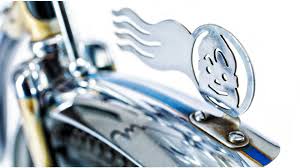
1942: Since the production of bicycles during the war period is subordinated to the armament production, material and processing must be saved. Even the legendary trademark of the diamond bicycles, the control head shield, falls victim to the savings.
1944: On July 27, 1944, the long-standing head of the bike department Max Lange has his service jubilee. He has been with Diamond for the past forty years and has earned himself with the full dedication to the company. He is not only widely known, but also enjoyed everywhere.
1945: From June 1945, the city of Siegmar-Schönau belongs to the Soviet occupation zone, which also implements the "Joint Declaration of the Victory Powers" of June 5, 1945 in the Elite-Diamant factory: the collection of all basic resources, material stocks and finished products.
1946: On June 6, 1946, SMAD issued Order No. 167, which contains the instruction that 202 of the 876 dismantling operations should remain in the country. This means the rescue for the Elite Diamond factory, which will be taken over from the Soviet company "Awtowelo" in December, becoming the property of the Soviet Union.
1950: The soil of old electroplating threatens to collapse by years of acidity. On March 8, the first groundbreaking ceremony will be held for the new construction of the electroplating grinder building, which will be available in December 1950.
1951: Elite Diamant now has 1,588 employees, and at the beginning of the year, the managing director, Kurt Schneeweiß, sets the target: 200,000 bicycles.
1952: Due to the positive economic development in the GDR, the Council of Ministers surrenders a large proportion of the SAG companies to the GDR. Thus also diamond, which becomes thereby VEB (Volkseigener enterprise).
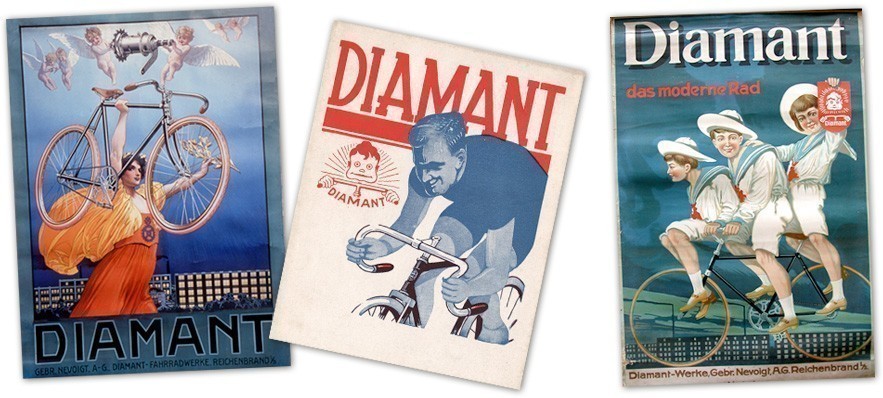
1953: As a popular enterprise of the GDR, the Diamantwerk produced 295,000 copies.
1955: Gustav Adolf "Täve" Schur won the grand prize at the VIII International Peace Movement. The second-best single-player of the GDR team is Detlef Zabel, the father of Erik Zabel, who reached ninth place. The GDR team occupies 2nd place overall.
1956: 1956 rolled the 3-millionth wheel from the band, in the subsequent years the two-wheel production commutes to 150,000 to 180,000 bicycles annually.
1958: In 1958 270,000 bicycles (including 10,000 sports bicycles) and 1,764 flat knitting machines are on the agenda for VEB Elite-Diamant Fahrradwerke, which now totals 1,850 workers and employees, which corresponds to a total production value of nearly 47 million Marks.
1968: The diamond wheel is to be placed on the siding: The deputy minister for tooling and processing machines decides, among other things, that the bicycle production at Elite Diamond is discontinued in October 1973. Already this year, the entire production of sports bicycles has to be handed over to Mifa-Werke in Sangerhausen.
1969: Only one year later it looks different again: The number of 330,000 bicycles is completely beside it, the demand is calculated with over 510,000 pieces. The Mifa plants can not reach such numbers alone due to outdated production sites and lack of labor, which is why the cessation of the bicycle production is again off the table.
1978: Due to the improved situation on the world market, the management decides to resume the export business. In most countries the bicycles are sold as "Deutsches Markenrad", "Original Diamant" or "Elite-Diamant". Only in the FRG can the wheels not be sold under their own brand name, which is why the name "Diadem" is used.
1990: After the fall of the Wall, the government adopted on 1 March 1990 the ordinance for the conversion of the Volksseigenen into corporations. On 28 June, the VEB Elite-Diamant will become the "Elite-Diamant - GmbH Flachknickmaschinen- und Fahrradwerke Chemnitz".
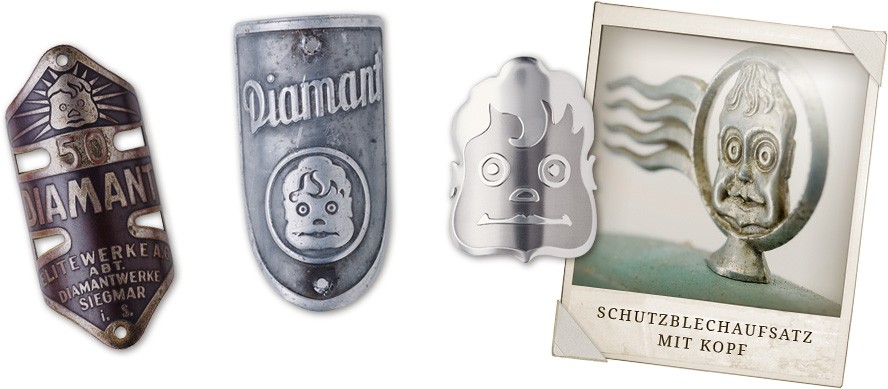
1992: The "Produkterlinie Fahrrad" is privatized and re-founded under the name "Diamant Fahrradwerke GmbH" to write further bicycle history.
1996: The "Handy Bike", a folding bike made of stainless steel comes onto the market. It is impervious to moisture and should therefore appeal to water sportsmen and boat owners.
1998: In the year 1998 the 10-millionth diamond wheel leaves the newly founded company headquarters in Hartmannsdorf.
2002: After 13 years of management by the Villiger Group, the company is taken over by the Trek Bicycle Corporation in 2002.
2010: Diamond - a highly modern company with a daily production of 650 bicycles, high quality standards and innovative solutions such as the pedelecs and the Ride + technology. State of the art. Heart of the street. 125 years of diamond - a success story with many stages. And for a long time no end in sight.
2012: 100 years of topas. A second round birthday takes place two years later: the success model Topas, based on the original of 1912, 2012 has existed for 100 years. It is clear that "the" classic "Diamond" is honored with a special edition.
2014: Greetings, Diamond! 2014 as a promising start to a new stretch line: Diamant expands its sphere of influence and produces in the future not only for the German and Austrian market, but also for the Swiss.
